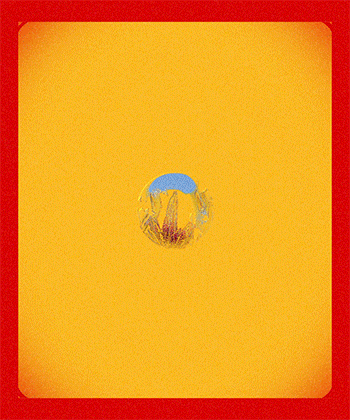
Spacial Quiet
Masked within the trials of Scampia, in loud visuals, clashing colors and messaging, and between untidy spaces… is the suburban landscape’s inner peace. It’s found within quiet nooks, corners vacant of people, honest rituals of its residents, and little trails of love that have been left behind on cramped, unkempt architecture and between overgrown paths and unregulated trails.
So when I visited Scampia, its loudest characteristics became not remnants of danger and raging criminal activity, but an inner peace; I remember visual imagery that reminds me of home, in both conceptual and personal implications of the term, and spacial annotations which highlight the neighborhood’s complexity and integrity. So to a place where I’m the foreigner, where I’ve been lucky to glimpse its most sincere stories — to me, these are the images which contribute to a nuanced portrait of a place.
* * *
It carries traces of a blossoming garden; it’s spacious enough outside to hear the wind shuffle from blocks away and a blue sky decorated with drifting clouds creates a dream-like haze. Vibrant hints are sprinkled throughout, from plump fruit on a thriving orange plant, candy wrappers that reveal the children’s favorite flavors, crushed Coca-Cola cans that prove that the soda is a universal common ground, pigmented artworks and flowers left at religious monuments, and colorful laundry hanging from nearly every apartment window (the laundry string reminds me of a shoelace or rope woven between balconies, intertwining the building’s residents). It’s refreshing to know that most trinkets left on the streets come from Scampia’s inhabitants themselves, rather than the tourists that tend to flood other Italian cities.
For a neighborhood infamous with remarks of organized crime, an active Camorra presence, and illegal occupation — such familiar imagery are echoes of home.
The same remains in the anti-Camorra camp I’m honored to be welcomed into. It becomes apparent that within every corner and turn, even without the presence of the residents themselves, the space of the home itself is enough to reveal its heart. A zestful rabbit greets by the front door (and surely, any home that welcomes animals must be a good one!), foreshadowing more charming animals, including a pig, a goat, and a number of dogs, waiting in the backyard. They reside in a recreational space, a sort of sacred field protected by a noble fence and layers of greenery. A foosball table reminds me of one that dwells in my childhood home. I can nearly hear a soundtrack of warm evening laughter backdropped by a sizzling barbeque grill and crowded dining table.
The sails carry a narrative as layered as the architecture. Solitude resonates through its halls; it embodies visual trails of what Scampia has gone through — surfaces damaged and its foundations mistreated. It tests those who choose to call it home, yet only to return love to the ones who’ve come to cherish and appreciate it. So beyond a weathered exterior are homes blossoming with pride and strength: notes of love, art, community, and undeniable hope and enthusiasm for the youth.
***











